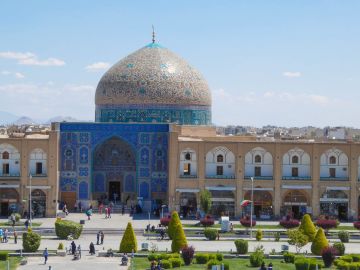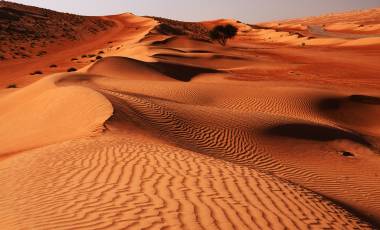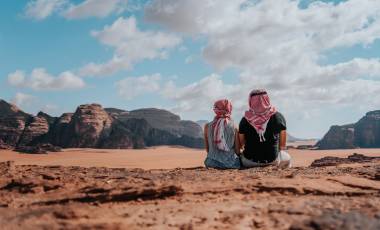Read time – 7 minutes
“Hello, where you from?” an Iranian man asks me. I’m leaning against an arch beneath the Royal Bridge in Isfahan watching a group of young men who are just hanging out and singing.
They’re not buskers or performers, just some friends having a sing-along, part of a long artistic tradition in the Middle East rich in music and poetry. As for the man who approaches me, he’s promenading along the river with his family.
In fact, everywhere are families, groups of friends and couples sat in the shade of the bridge, having barbecues along the river and generally enjoying a lazy Friday afternoon (Friday is the weekend in Iran).
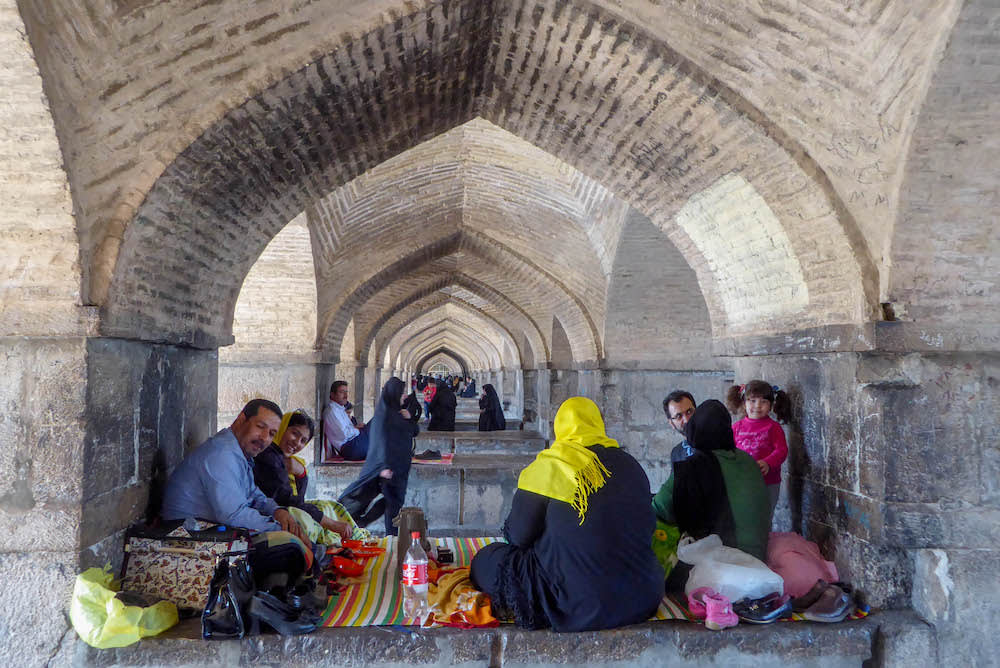 Royal Bridge, Isfahan
Royal Bridge, Isfahan I chat briefly with the Iranian man, the conversation is similar to countless interactions I’ve had since arriving in the country almost two weeks earlier.
First, there’s curiosity as to where I’m from and what I think of Iran, but beyond this, there’s normally an exclamation of joy at us visiting their country and seeing for ourselves what it is truly like. Iran is a conservative country, and there are still many signs of anti-western rhetoric, very similar to the anti-Iranian rhetoric portrayed in various western media outlets.
Most symbolic are the murals emblazoned on the walls of the former US embassy, just around the corner from our hotel in Tehran. These signs, however, are only one side of what’s going on in Iran and are far outweighed by the constant signs of friendship and hospitality we experience every day.
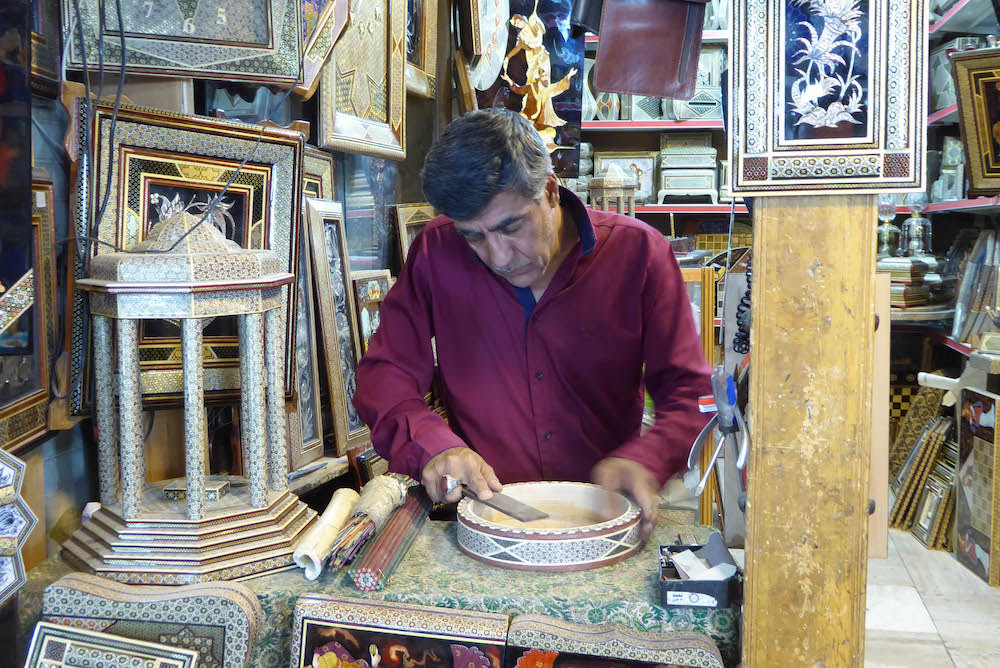 Craftsman, Shiraz Bazaar
Craftsman, Shiraz Bazaar Before coming to Iran I’d heard and read about the kindness of its people, but until I experienced it for myself I didn’t quite realise the extent of it: from the man in Kerman who saw us looking lost, parked his car, came back to find us just to ask if he could help, to the owner of the Music Museum in Isfahan who gave one of our party one of his instruments simply because she’d shown an interest in it and, as he said, it’s the Iranian way, or just the various times an English-speaker would step up to help translate.
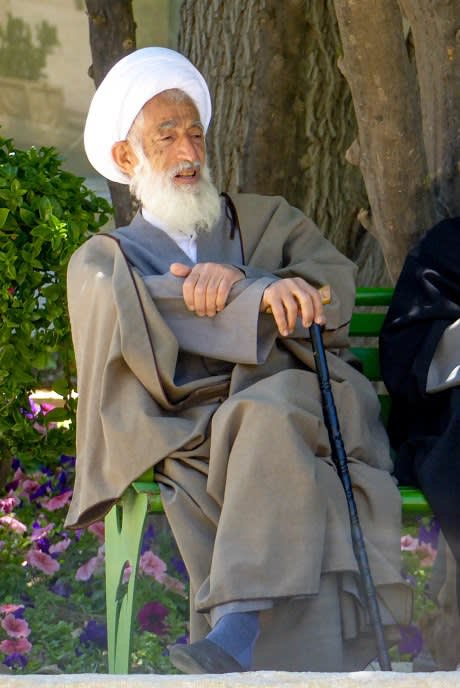 Mulla, Shiraz
Mulla, Shiraz Iranian Dress
One of the symbols of Iran is the headscarf, hijab or chador – though there are no burkas or niqabs here. In more conservative areas, the chador, which is a long dark robe that covers the head and the body, is common, however, in liberal cities like Tehran and Shiraz, a simple headscarf worn as far back on the head as possible is the norm.
It’s still a legal requirement but the women in my group tell me of various conversations with Iranian women who say they wish this would change. In fact, many of the Iranian women we meet are quite coquettish, elegantly dressed, with manicured nails and make up worn.
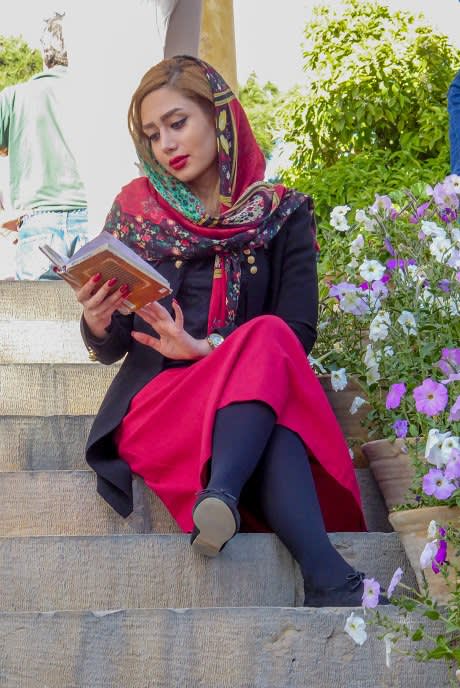 Lady reading at the Hafez Mausoleum in Shiraz
Lady reading at the Hafez Mausoleum in Shiraz Ask just about anyone who’s travelled to Iran and the people will be one of the highlights, but, of course, this isn’t what draws most us here initially.
Culture and History of Iran
Over the millennia, Iran found itself at the centre of the known world, whether it was during antiquity and the Greco-Persian wars, the Middle Ages and the Silk Road, Victorian times and the Great Game or modern days and the discovery of oil.
Throughout the centuries the country has seen its fair share of scholars, poets, theologians, artists as well as invaders. All of this has left its mark, and this is what, at first, brings most people to Iran.
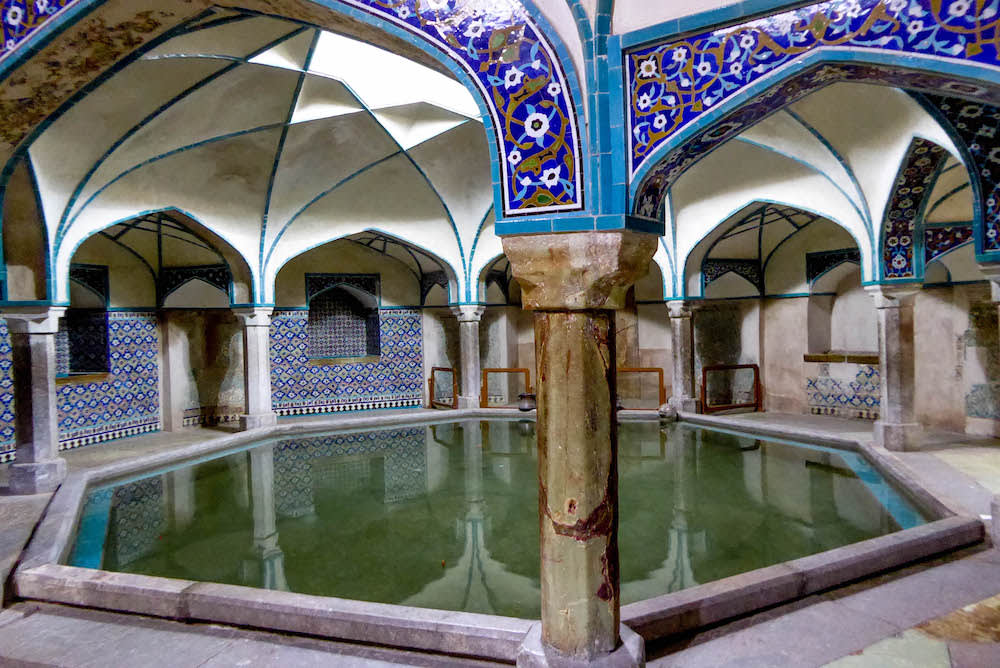 Beautiful tilework at the Kerman Bathhouse
Beautiful tilework at the Kerman Bathhouse As we journey through the country this rich history and culture are omnipresent. We wander through traditional adobe villages, merchant houses, desert forts and old towns. We explore cool, green gardens and admire the sheer size of Achaemenid ruins – none more impressive than Persepolis with its intricate bas-relief.
We meander through the vibrant bazaars with their intrinsic crafts, Persian carpets, enamel works, boxes and pottery. Religion, of course, is important in Iran; we learn about Zoroastrianism and Sufism and visit the Armenian Cathedral in Isfahan but the greatest influence is that of the Shiite branch of Islam.
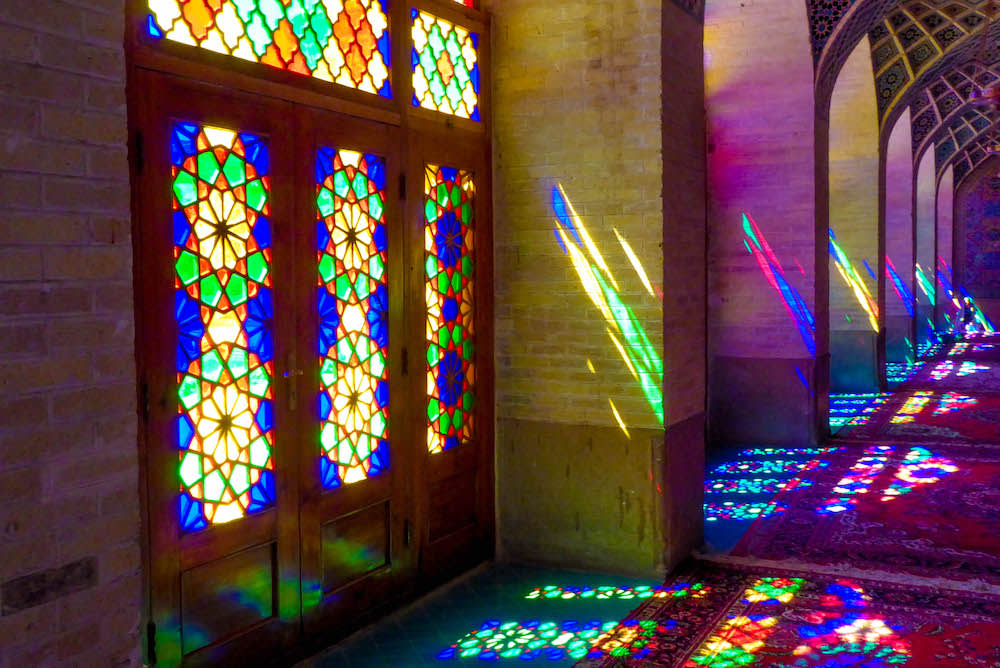 Nasir ol Molk Mosque Shiraz
Nasir ol Molk Mosque Shiraz Iranian Architecture
It’s left its mark on the country’s history and relations with its neighbours but has also created some of the world’s most beautiful buildings in the form of the various mosques and some of the palaces. These buildings are covered in delicately hand-painted tiles and coloured glass and are a pure feast to the eyes.
The architecture is exquisite, from the towering minarets to the details of the squinches (an architectural term you become accustomed to in Iran). And then, after visiting wind towers and Towers of Silence, mausoleums and troglodyte villages and crossing vast desert and mountain landscapes, the greatest site in all Iran, and one of the greatest I’ve seen anywhere, Isfahan’s main square reveals itself to us – the epitome of the rich history, culture and beauty of the country.
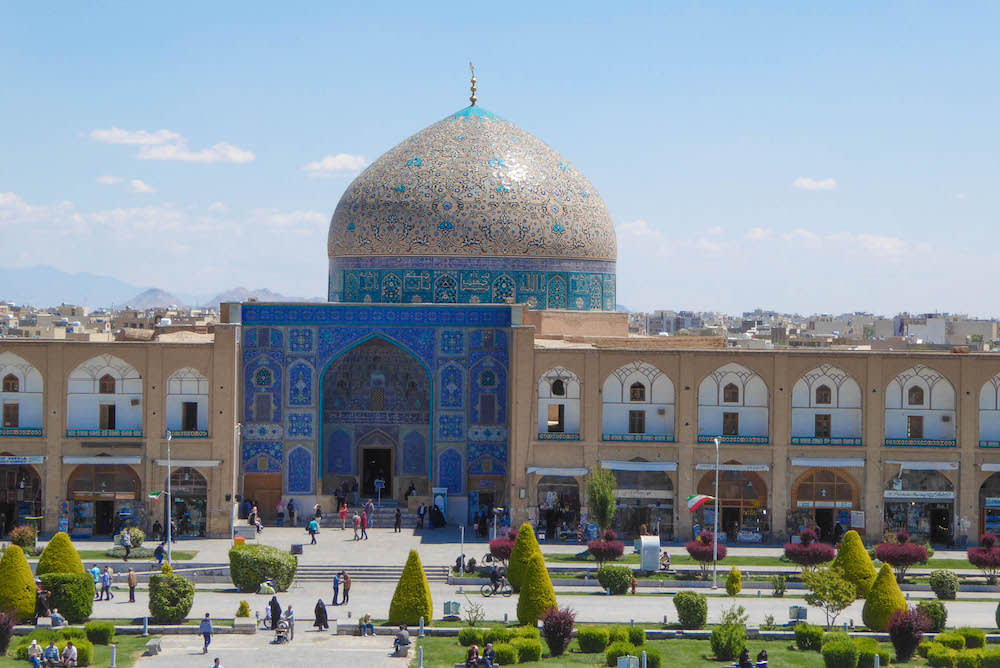 Naqsh-e Jahan Square, Isfahan
Naqsh-e Jahan Square, Isfahan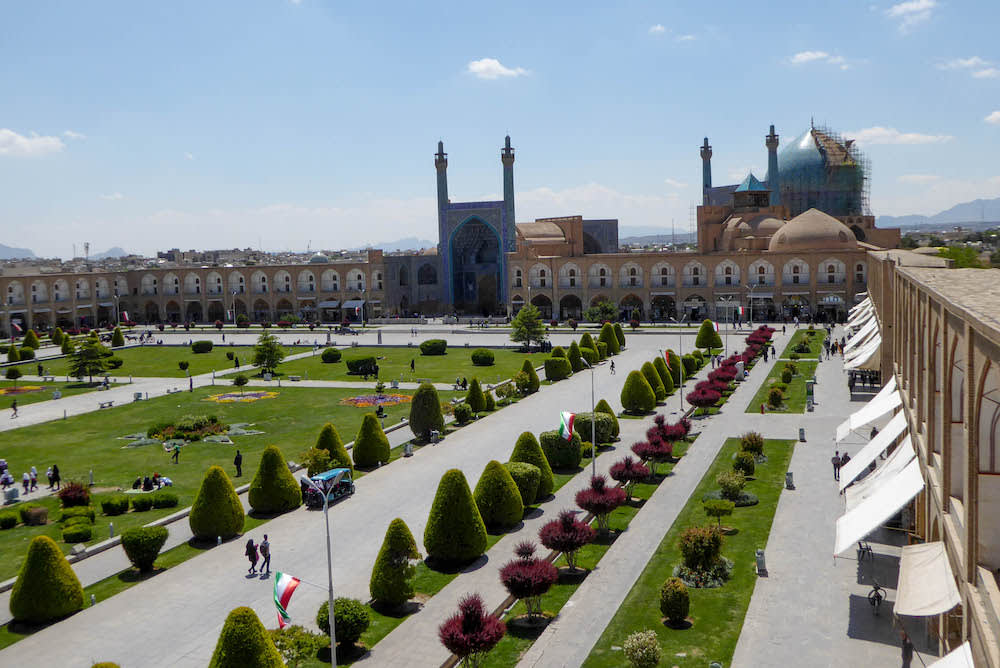 Naqsh-e Jahan Square, Isfahan
Naqsh-e Jahan Square, Isfahan And as I sit on a low wall, watching the world go by in this vast square surrounded by bazaars, mosques and palaces, I hear someone come up to me: “Hello, where you from?”
See our tours of the Middle East below.
